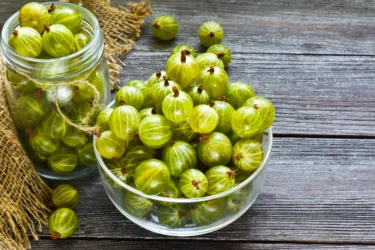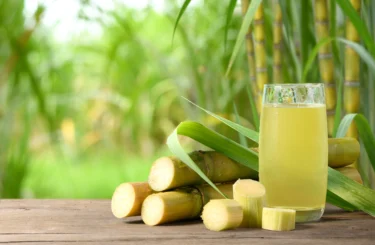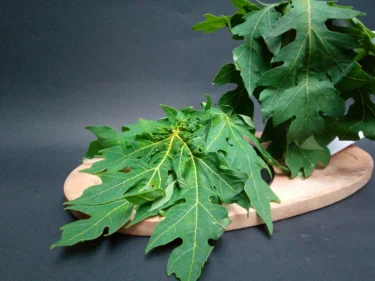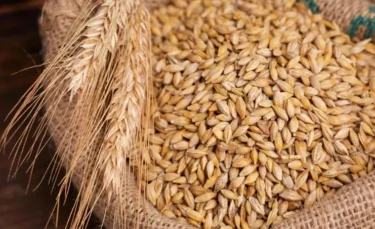Jaundice: Symptoms, Treatment, Causes and Types
By Dr. Vishesh Bharucha +2 more

Get,

to manage your symptom
Get your,


4 Cr+ families
benefitted

OTP sent to 9988776655



You’ve successfully subscribed to receive
doctor-approved tips on
Whatsapp

Get ready to feel your best.

Hi There,
Download the PharmEasy App now!!


Register to Avail the Offer
Send OTPBy continuing, you agree with our Privacy Policy and Terms and Conditions

Hi There,
Sign up on PharmEasy now!!
Trusted by 4 crore+ families

OTP sent to 9988776655



You have unlocked 25% off on medicines




Code: NU25
By Dr. Vishesh Bharucha +2 more
Table of Contents
Jaundice is a clinical condition characterised by a yellowish discolouration of the skin, sclerae (the white part of the eyes), and mucous membranes. This discolouration is caused by elevated levels of bilirubin in the bloods, a condition known as hyperbilirubinaemia. In India, a considerable proportion of the population is affected by jaundice annually, with varying degrees of severity.
Neonatal jaundice, which affects newborns, is particularly concerning due to its potential to cause serious health complications if not promptly diagnosed and treated. It remains a significant contributor to infant morbidity and mortality, especially in areas with limited access to early medical care. While no vaccine exists to prevent jaundice, early recognition and timely intervention are essential, particularly in vulnerable paediatric populations.

Most medical practitioners believe that jaundice is not a disease but a symptom of an underlying condition that affects the metabolic functions of the body. The effects of jaundice can range from minor complications to severe systemic dysfunction, and, in some cases even death if left untreated. In this article, we will examine the types, causes, symptoms, and available treatment modalities for jaundice in greater detail, with particular emphasis on both adult and neonatal presentations1.
Jaundice, also known as icterus, is a medical condition that causes a yellowish discolouration to the skin and the sclerae, resulting from elevated levels of bilirubin in your blood. Bilirubin is a breakdown product of haemoglobin that is processed by the liver and eliminated through bile into the intestines. When this process is disrupted due to liver dysfunction, bile duct obstruction, or other metabolic disturbances, bilirubin accumulates in the blood, leading to jaundice.
Neonatal jaundice, can result in severe complications such as Kernicterus (an irreversible form of brain damage) if not treated promptly. In adults, untreated jaundice may also lead to serious neurological consequences if bilirubin reaches toxic levels2.
Jaundice is not a disease in itself but a clinical sign of an underlying pathology, most often involving the liver, biliary system, or red blood cell metabolism. Accurate diagnosis is essential to determine the root cause, and medical treatment focuses on addressing this primary condition and reducing bilirubin levels to prevent further complications.
To the best of my knowledge, jaundice is a condition characterised by yellowing of the skin and eyes, resulting from an elevated level of bilirubin in the blood. It stems from various causes like liver disease or hepatitis and presents symptoms like yellow skin, fatigue, abdominal pain, and dark-coloured urine. In adults, jaundice typically does not need specific treatment. Instead, the underlying causes and potential complications of jaundice may be addressed and managed. Jaundice are of different types categorised based on the metabolism of bilirubin, including the three different stages (pre-hepatic, hepatic, and post-hepatic), each with its unique causes and treatments12.
Dr. Siddharth Gupta, B.A.M.S, M.D (Ayu)
Since there are multiple reasons behind why jaundice can occur, it has been classified into 3 broad categories based on the causal factors1,2. The classification is done by studying which part of the liver is malfunctioning and how it affects the disposal of bilirubin from the bloodstream. The three major types of jaundice are outlined below.
Hepatocellular jaundice is a type of jaundice that occurs due to damage to the liver. This damage can be caused due to many reasons. When the parenchymal cells of the liver are damaged, whether due to infections or other underlying conditions, it can significantly impair hepatic function, leading to a reduction in the liver’s metabolic activity.
Hepatocellular jaundice can also be caused due to other diseases such as hepatitis wherein the liver is highly infected by the hepatitis virus, rendering it absolutely non-functional. Other medical conditions such as liver cancer or liver lacerations due to liver cirrhosis caused due to alcohol abuse can also cause hepatocellular jaundice.
Haemolytic jaundice happens when the red blood corpuscles in the bloodstream start to break down at a faster than normal pace causing an issue for the liver to keep functioning with such a large amount of bilirubin coming into the system. This condition marked by the excessive decomposition of the red blood cells is known as haemolysis and is a serious medical condition that can prove to be fatal very soon. Haemolytic jaundice can be defined as an imbalance between the RBC breakdown and bilirubin clearance procedure ratio of the blood and liver.
Haemolytic jaundice is highly common in patients who have malaria. In this condition, the malaria parasite quickly attacks and destroys red blood cells, which causes a rise in bilirubin levels in the blood. The body needs to make new red blood cells to replace the ones that are lost, but sometimes it can’t keep up. When red blood cells break down faster than they are made, it can lead to jaundice.
Obstructive jaundice is a kind of jaundice that occurs due to blocks that are formed between the bile ducts connecting the liver, gallbladder, and intestine. This obstruction or block prevents the liver from removing the excess bilirubin from the liver causing severe malfunctioning of the liver which in turn causes jaundice.
The bile duct comprises a network of tubes responsible for transporting bile from the liver to the gallbladder. Obstructive jaundice can arise due to multiple elements that can cause a block in the bile ducts. The best example of the same would be gallstones which can be present in the passages of the biliary system. Swollen lymph glands can also cause obstructive jaundice.
Studies12 have demonstrated jaundice is a medical condition characterised by the yellowing of the skin and eyes, often resulting from liver dysfunction, hepatitis, or bile duct blockage. Common symptoms include yellow discolouration, fatigue, and dark-coloured urine. Management varies based on the underlying cause and may involve managing the root cause including lifestyle adjustments or surgical procedures as necessary. Jaundice can be categorised into different types, such as obstructive, haemolytic, or hepatocellular, each associated with distinct causes and therapeutic approaches. Early diagnosis and tailored management are vital for effectively addressing jaundice and its related complications.
Dr. Rajeev Singh, BAMS
Jaundice presents with several recognisable clinical symptoms. However, the primary diagnostic challenge lies in identifying the underlying cause of liver dysfunction leading to jaundice. The symptoms listed below are among the most common indicators suggestive of jaundice and warrant further medical evaluation2:

One of the most noticeable signs of jaundice is the yellowing of the skin and the whites of the eyes. This happens because there is too much bilirubin in the bloodstream, which naturally has a yellow colour.
Vomiting is yet another classic symptom of jaundice, especially in the early stages of jaundice. It happens when the liver isn’t working properly, which affects digestion and can cause indigestion. This often leads to vomiting.
High fever is also a symptom of jaundice, but it’s not very helpful for diagnosing it since many other conditions can cause fever too. A high fever is the body’s way of signalling that something is wrong and that it needs help. In the case of jaundice, when the body’s health quickly declines, it’s important to see a doctor as soon as the fever starts.
If you are affected with jaundice there are chances that your urine will turn extremely dark. This is because of the excess bilirubin that is getting excreted through the urethra. This is a very serious indicator that the bilirubin amount in the patient’s blood is rising at a fast pace.
If dark urine is noticed you need to get medical guidance immediately to ensure that there are no further complications that arise due to jaundice.
In individuals affected by jaundice, a marked decline in appetite is commonly observed. This may be attributed to gastrointestinal disturbances resulting from bile duct involvement, which can lead to symptoms such as indigestion and a burning sensation, both of which may contribute to reduced food intake. It is important to ensure that the patient continues to consume a minimal, nutritionally supportive diet, which will be discussed in detail later.
As jaundice gets worse, the liver may stop working completely. When this happens, bilirubin (a substance that gives stool its normal colour) isn’t released in the stool, causing it to become pale or light in colour. This is a clear sign of jaundice.
Stool tests are therefore very important to doctors as this might be a very strong indicator of jaundice.
Abdominal pain localised to the area around the liver is another common symptom associated with jaundice. This type of pain happens because the liver experiences extreme discomfort due to overworking in the release of bilirubin or due to the blockage of the bile ducts in the case of obstructive jaundice. The pain next to the liver is never to be taken lightly and the patient should immediately consult the doctor to avoid further complications.
Weight loss, occurring faster than usual, can be a symptom of jaundice. This is primarily associated with hemolytic jaundice, where the production of bile decreases, leading to impaired nutrient absorption in the intestines. Additionally, this weight loss can result from other symptoms of jaundice, such as vomiting and loss of appetite.
There are several factors that can lead to jaundice. The underlying causes can often be identified and classified once the type of jaundice is determined. All three types of jaundice are linked to conditions that affect both the liver and the blood. Various infections and other diseases can also contribute to the progression of jaundice. In the following section, we will discuss some of the primary causes of jaundice2,3.
Malaria is a vector-borne disease that affects many individuals in India. The malaria parasite, transmitted through mosquito bites, infects red blood cells and derives its energy from them. This accelerated destruction of red blood cells can result in a rapid increase of bilirubin in the bloodstream, overwhelming the liver’s ability to process and eliminate it.
Sickle cell anaemia is a relatively rare genetic disorder characterised by crescent-shaped red blood cells, whereas healthy red blood cells are typically disc-shaped. This abnormal shape leads to the accelerated destruction of red blood cells, resulting in increased bilirubin production, which can contribute to the development of jaundice.
Spherocytosis is another genetic condition that causes the red blood cells to adopt a spherical shape rather than the typical disc shape. This abnormality leads to the rapid breakdown of blood cells, resulting in an accumulation of bilirubin in the bloodstream.
Thalassemia is a genetic disorder that impairs the body’s ability to produce an adequate number of red blood cells, leading to a low red blood cell count. This condition can also result in elevated bilirubin levels in the bloodstream, contributing to the development of jaundice.
Liver cirrhosis is a medical condition characterized by the scarring of liver tissue, which occurs over time as a result of prolonged exposure to infections and toxic substances, often due to alcohol abuse.
Hepatitis is a medical condition that causes inflammation of the liver, significantly impairing its function. It is considered a serious condition, as it hinders the liver’s ability to effectively process and eliminate excess bilirubin from the body, often resulting in jaundice.
This condition occurs when the bile ducts sustain significant damage, impairing their capacity to manage and direct bile flow. As a result, bilirubin regulation in the bloodstream is disrupted, leading to the onset of jaundice.
Liver cancer can cause serious damage to the liver affecting its normal functionality. It makes the liver work extremely hard with the presence of cancerous tissues within it. This makes it highly possible for someone affected with liver cancer to be affected with jaundice too.
Gallstones are calcium deposits that form in the gallbladder and can severely disrupt the normal function of the bile ducts. These bile ducts are essential for the excretion of bilirubin from the bloodstream.
Pancreatic cancer is a serious medical condition that can lead to jaundice. It occurs when malignant cancer cells develop within the pancreas, potentially obstructing the bile ducts and affecting bilirubin processing.
. A malignant tumour in the bile ducts can also result in jaundice. Such cancerous growths may significantly obstruct bile duct function, blocking the normal flow of bile and bilirubin.
Biliary atresia is a genetic condition characterised by the complete absence or significant narrowing of the bile ducts, leading to impaired bile duct function. This condition can also cause jaundice as the bile ducts are not able to excrete the excess bilirubin.
The treatment for jaundice is primarily determined by the underlying condition causing the condition. The type of jaundice plays a crucial role in guiding the treatment approach. In most cases, treatment focuses on addressing the root cause rather than directly treating the jaundice itself. In the following section, we will discuss some of the common treatment methods used for managing jaundice1,4.
Haemolytic jaundice is caused by anaemia or other conditions that hinder the production of healthy red blood cells. Treatment primarily focuses on addressing the underlying cause. For jaundice induced by general anaemia, iron supplementation can support the recovery process. In conditions such as sickle cell anaemia and other genetic blood disorders, treatments like intravenous rehydration and blood transfusions may be necessary.
For jaundice caused by conditions such as thalassemia and spherocytosis, folic acid supplementation and, in some cases, spleen removal surgery are common treatment approaches. In severe cases, where the production of red blood cells is significantly impaired, more invasive procedures, such as bone marrow transplantation, may be required.
Liver damage leading to jaundice is primarily treated by addressing the underlying cause impairing liver function. In cases where the damage is due to infections, antiviral medications are used to prevent the infection from spreading and help it gradually subside. Hepatitis is one of the main conditions that can lead to jaundice. Patients with hepatitis may be treated with steroid medications for more effective results. Additionally, hepatitis vaccination plays a crucial role in reducing the risk of liver infection.
For individuals with liver scarring due to cirrhosis, doctors typically recommend a low-protein diet and advise complete avoidance of alcohol. Beta-blockers and intravenous antibiotics are also commonly prescribed for treatment. Biliary cirrhosis is often managed with bile-lowering medications, and antihistamines are used to alleviate severe itching. Additionally, bile reduction medication is administered, and bile acid supplements may be provided to assist with indigestion.
Liver cancer is another significant cause of jaundice, and standard cancer treatments are employed in these cases. Chemotherapy and targeted radiation therapies are commonly used. In more advanced cases, a liver transplant may be necessary for effective treatment.
Treatment typically involves surgical intervention to remove the obstruction. In cases where jaundice is caused by gallstones, doctors may recommend dietary changes to prevent further gallstone formation. Medications to dissolve the gallstones may also be prescribed to enhance treatment effectiveness. In more severe cases, surgery may be necessary to remove the gallstones or, in some instances, the entire gallbladder.
Obstructive jaundice caused due to the poor functionality of the bile ducts is treated using surgery. Some of the common issues that affect the bile ducts are conditions such as bile duct cancer or biliary atresia. An advanced medical procedure known as the Kasai method is used to remove and replace the faulty bile ducts to remove the obstruction causing jaundice. In the case of pancreatitis, treatment methods will be more focused on the pancreas and usually involve a lot of rest time for the patient. Surgery is done at times to remove the causal factors of inflammation of the pancreas.
Home remedies have been used for the treatment of jaundice since a very long time. These treatments are mainly focused on flushing out the excess bilirubin from the bloodstream by focusing on alternative diets.
However, it is important to note that jaundice can progress rapidly in certain cases, and relying solely on home remedies without medical supervision may be dangerous and potentially life-threatening. Home remedies can be very effective, but it’s always safer to approach a doctor to understand the severity and cause of your jaundice.

Radish juice and radish leaves are traditionally believed to support the reduction of bilirubin levels in the body. Consuming radish juice, particularly when combined with extracts from its leaves, may aid in improving blood detoxification and supporting bowel movements, beneficial effects for individuals experiencing loss of appetite during jaundice5.
Although raw radish juice may have a strong and unpleasant taste, it can be made more palatable by diluting it with water or adding natural sweeteners such as honey. While these remedies may support liver health, they should be viewed as complementary and not as substitutes for medical treatment.

Indian gooseberry, rich in vitamin C, is commonly recognised for its potential health benefits. When combined with lemon, it forms a powerful natural remedy for individuals with jaundice. Indian gooseberry is thought to help protect liver cells by forming a protective layer around them. Additionally, vitamin C plays a role in regulating blood flow, which can support the body’s detoxification processes6.

Lemon is a fruit that can be very helpful among those who have jaundice7. Consuming lemon juice and also the water in which lemon leaves have been boiled can help with providing the needed relief for your damaged liver. In many countries, patients with jaundice are commonly advised by healthcare professionals to consume ample amounts of lemon juice.

Sugarcane juice is believed to have beneficial properties for individuals with jaundice. The components in sugarcane juice may aid in liver recovery, which in turn helps normalise blood detoxification processes8.

Papaya leaves are believed to help in liver recovery and support detoxification of the bloodstream. To use, crush the leaves into a paste and consume regularly until jaundice improves. Papaya leaves are also considered beneficial for maintaining platelet levels, particularly in dengue. However, these remedies should complement, not replace, professional medical treatment9.

Barley is widely recognised for its traditional medicinal properties. Consuming well-boiled barley may act as a natural diuretic, potentially supporting the body’s detoxification processes by promoting the elimination of waste products through increased urine output. This may aid liver function and contribute to the overall cleansing of the bloodstream. As such, barley is often considered a supportive home remedy in the dietary management of jaundice. However, it should be used as a complementary measure and not as a replacement for medical treatment10.
Also Read: Can You Check Thyroid at Home
Maintaining a diet with low-complexity foods is crucial for supporting liver function during jaundice. Adequate hydration is also essential to assist the body in detoxifying effectively. Following a balanced diet that places minimal strain on the liver can aid in its recovery while it is under stress. Additionally, reducing salt intake is important to ensure normal blood flow and support overall health during jaundice11.
Jaundice is a dangerous condition that if left untreated can lead to serious complications and sometimes even death. It’s important to consult a doctor immediately as soon as you start seeing symptoms of the condition to start appropriate treatment.
Also Read: What is Hepatitis A? Causes, Symptoms, and How It Spreads
Jaundice is a symptom of underlying liver or blood disorders, jaundice requires timely medical treatment, but supportive home remedies like lemon, gooseberry, and sugarcane juice may help with liver recovery. These should be used alongside and not as a substitute for professional medical care.
Also Read: Malaria: Types, Symptoms, Causes and Treatment
Yes, jaundice can be life-threatening if left untreated for an extended period. In severe cases, it may lead to fatal outcomes. It is essential to seek prompt medical attention at the earliest signs of jaundice to ensure timely diagnosis and appropriate management.
Yes, jaundice can be effectively managed and, in many cases, resolved if the underlying cause is accurately identified in a timely manner. Various treatment approaches are available, depending on the specific cause, to facilitate recovery and restore normal liver function.
Newborn babies are particularly vulnerable to jaundice, as their livers are still developing, making treatment more challenging. Medically referred to as neonatal jaundice, this condition can be severe and, if left untreated, may result in fatal outcomes.
Disclaimer: The information provided here is for educational/awareness purposes only and is not intended to be a substitute for medical treatment by a healthcare professional and should not be relied upon to diagnose or treat any medical condition. The reader should consult a registered medical practitioner to determine the appropriateness of the information and before consuming any medication. PharmEasy does not provide any guarantee or warranty (express or implied) regarding the accuracy, adequacy, completeness, legality, reliability or usefulness of the information; and disclaims any liability arising thereof.
Comments

Leave your comment...
You may also like
Comments